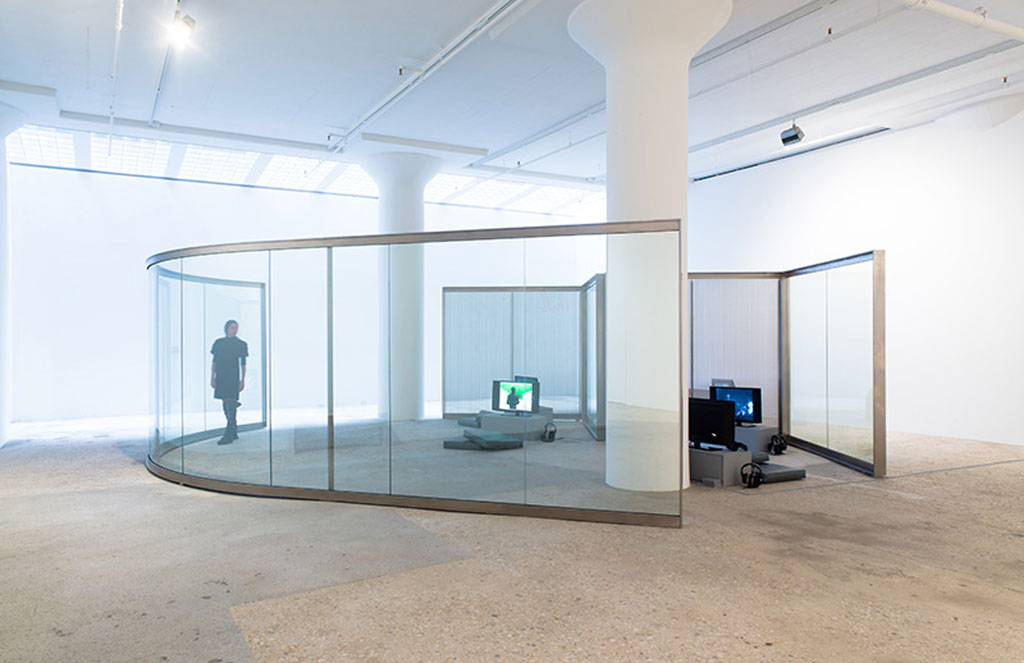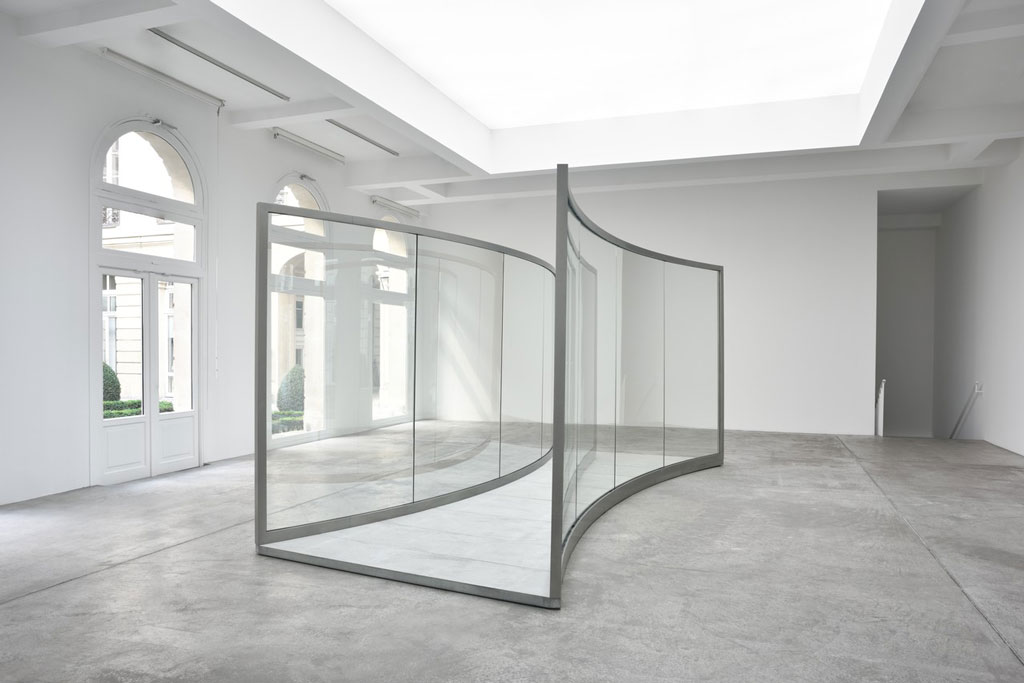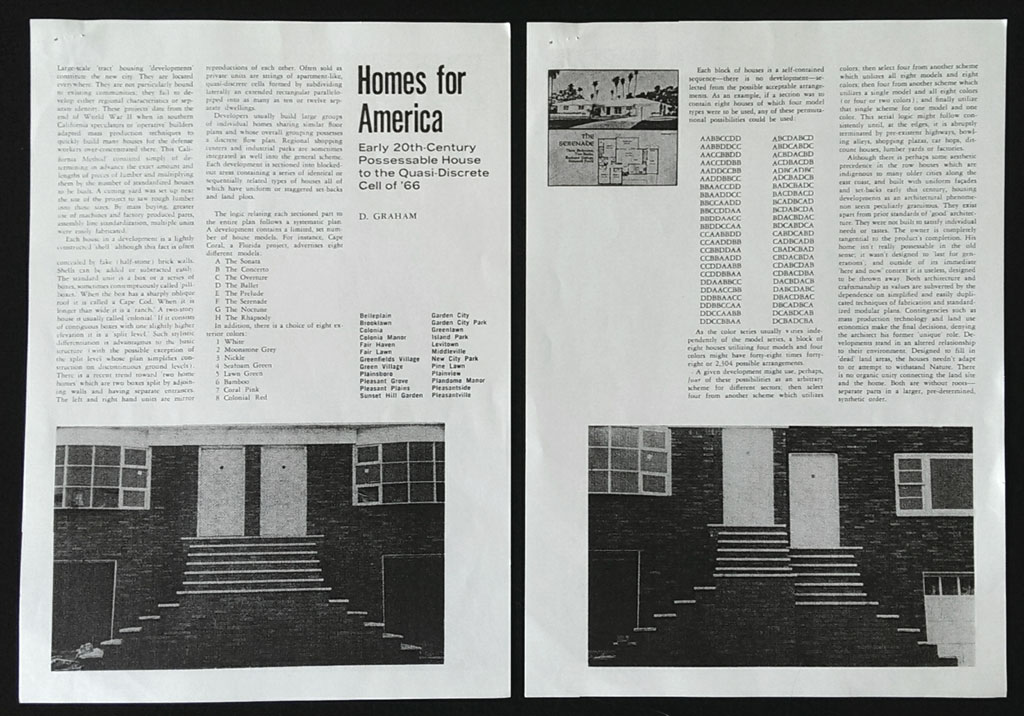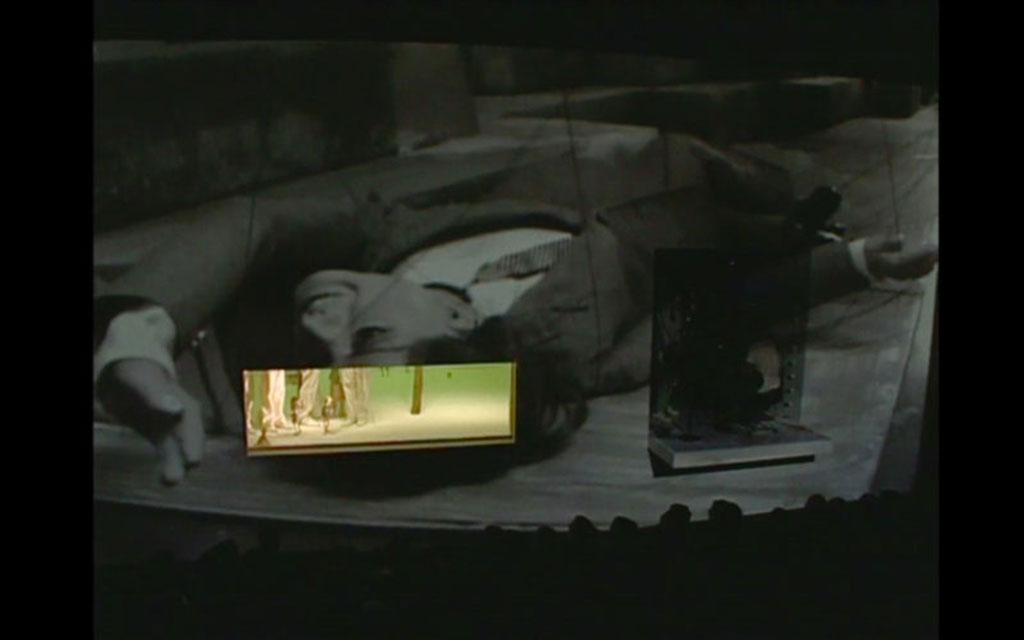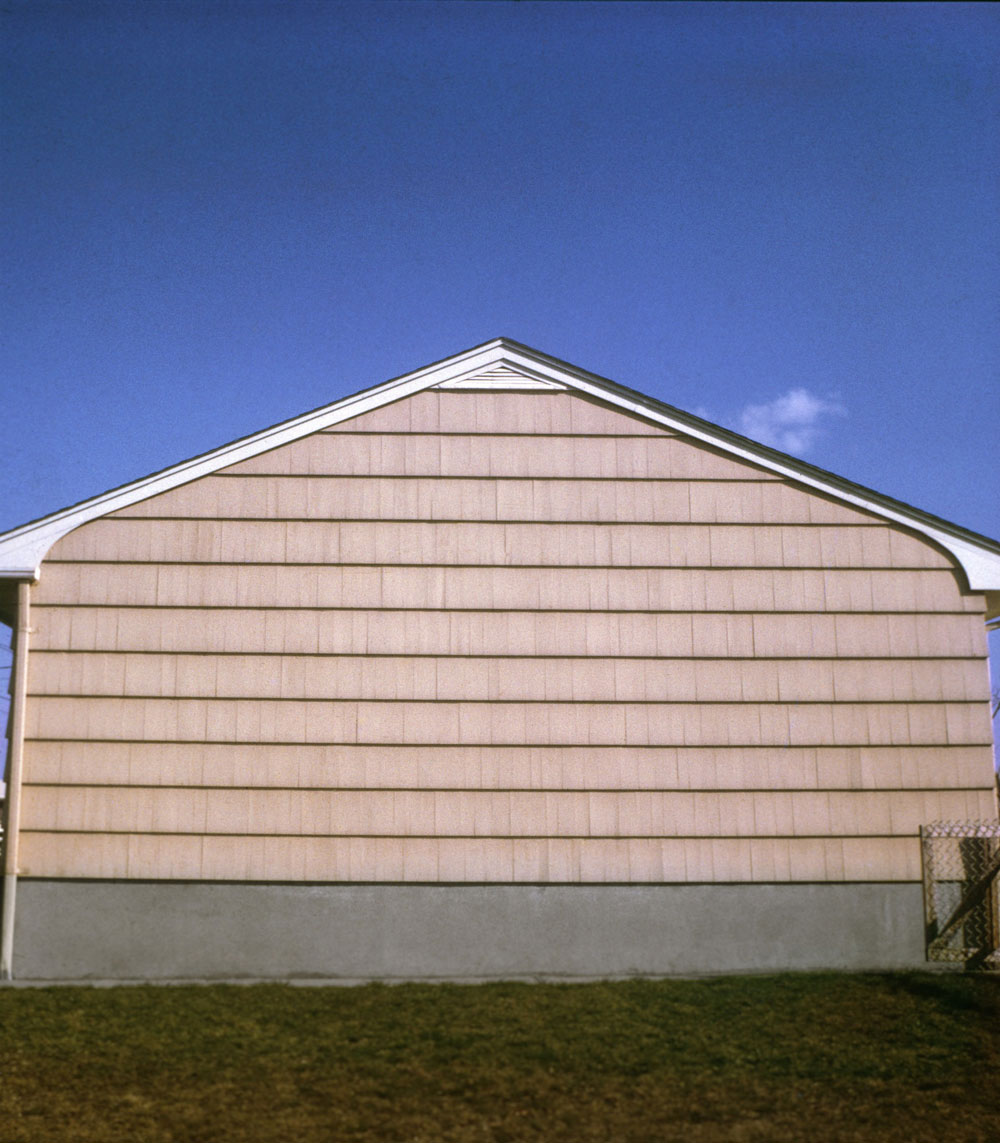TRACES: Dan Graham
 Today is the occasion to bear mind Dan Graham (31/3/1942-19/2/2022). The adoption of architectural vocabulary, a staple element in Graham’s work, is a way of emphasizing how our environment fundamentally structures our gaze. Through this column, as a tribute to artists, living or dead, who have left their mark in Contemporary Art. Through documents or interviews, starting with: moments and memories, we reveal out from the past-unknown sides of big personalities, who left their indelible traces in time and history…
Today is the occasion to bear mind Dan Graham (31/3/1942-19/2/2022). The adoption of architectural vocabulary, a staple element in Graham’s work, is a way of emphasizing how our environment fundamentally structures our gaze. Through this column, as a tribute to artists, living or dead, who have left their mark in Contemporary Art. Through documents or interviews, starting with: moments and memories, we reveal out from the past-unknown sides of big personalities, who left their indelible traces in time and history…
By Efi Michalarou
 Dan Graham was born in Urbana, Illinois in 1942 to Jewish-American parents. His father was a scientist while his mother was an educational psychologist. The family moved, three years later, to Union County, New Jersey, a suburban setting which would influence Graham’s later artistic practice. Graham was enchanted by television during the 1950s, fascinated by the role of the studio audience and relationships between spectators and performers. He also enjoyed building a telescope from a kit with his father and started an astrology club as a teenager, indicating an interest in vision and social relationships that would continue across his adult life. Graham had a breakdown at the age of thirteen and was prescribed anti-psychotic medication. He had difficulty in school and felt alienated from his peers, finding solace in reading widely, with the work of Jean-Paul Sartre, Walter Benjamin, Margaret Mead and various science fiction writers proving particularly influential. Graham has described the physicality of his work as a reaction against his difficult intellectual upbringing, noting that his mother “was in denial of the body” while his work became about relationships between the body and its physical environment, drawing upon the suburban playgrounds and prefabricated housing of his youth. Upon graduating from high school, Graham saw himself as a “dropout” rebelling against the middle-class assumption that he would attend university. He instead produced reviews and essays for rock magazines, something he described as “an adolescent dream”. Graham’s writing served as an introduction to the art world; he admired those, such as Robert Smithson, Dan Flavin and Donald Judd, who were interested in combining art and writing, and began to move in their direction. In 1964, at age 22, Graham founded the John Daniels Gallery with two friends, naming the gallery after an amalgamation of two partners’ first names. The gallery, made possible through the financial support of Graham’s parents, was located in Manhattan and set itself apart from the dominant Pop Art and Abstract Expressionist scenes, instead favouring Minimalism and Conceptual Art, then in their infancy. The John Daniels Gallery allowed Graham to meet the artists that he admired and learn from their work. Soon after the gallery opened, Sol LeWitt had his first solo exhibition there, attracting his friends, who included Robert Morris and Dan Flavin. The gallery was creatively and critically successful, but failed financially, closing after less than a year. Graham learned from the artists he worked with and began to create his own work, initially favoring photographic projects and graphic design. In 1965, Graham returned to his parents’ home in New Jersey to evade creditors, and began to photograph the housing developments of Northern New Jersey and Staten Island, which would form the basis of his first significant project, “Homes for America”. Graham presented his artworks, during the late 1960s, in magazines and as slide shows, resulting in the attention of Marcel Broodthaers and John Gibson, a prominent gallerist, who introduced him to collectors and museums and gave him his first solo show, at John Gibson Gallery, in 1969. In 1970, Dan Graham was included in Kynaston McShine’s exhibition, “Information”, at MoMA, which introduced Conceptual Art to mainstream audiences. He was invited, later in the same year, to the Nova Scotia College of Art and Design in Halifax, where he was among the artists included in David Askevoldhad’s course “Projects”, in which students executed works by prominent Conceptual artists; Graham’s contribution, on which the students worked, was a set of seven video pieces. Reluctant to be pigeonholed as a Conceptual artist, Graham continued to publish critical writing on music, art and architecture whilst expanding his artistic practice into performance and installation, with an increased interest in the psychology of audience behavior, using cameras, mirrors and projection to destabilize viewer experiences. Later in the decade, Graham was invited to return to teach at Nova Scotia College of Art and Design, leading seminars exploring contemporary mass media. In the 1980s, Graham was closely involved with the New York music scene, befriending Glenn Branca, Kim Gordon and Robert Longo, among others, and designing album covers for groups including Sonic Youth. These influences informed his art work, culminating in the video collage “Rock My Religion”, a thesis on the relation between religion and rock music in contemporary culture. Graham formulates a history that begins with the Shakers, an early religious community who practiced self-denial and ecstatic trance dances. With the “reeling and rocking” of religious revivals as his point of departure, Graham analyzes the emergence of rock music as religion with the teenage consumer in the isolated suburban milieu of the 1950s, locating rock’s sexual and ideological context in post-World War II America. The music and philosophies of Patti Smith, who made explicit the trope that rock is religion, are his focus. This complex collage of text, film footage and performance forms a compelling theoretical essay on the ideological codes and historical contexts that inform the cultural phenomenon of rock `n’ roll music. In the same decade, Graham began creating the mirrored structures for which he is best known, interactive pavilions that visitors can move through and around. These resulted in international solo exhibitions and institutional and private commissions around the world, cementing his reputation as one of the most significant contemporary artists working in the United States. In the 1990s, Graham published several retrospective collections of essays, including “Rock my Religion, 1965-1990” and “Two-Way Mirror Power: Selected Writings by Dan Graham on his Art”. He continued to teach internationally, including in Japan, where he met Mieko Meguro, an art student with whom he kept in touch. As Meguro’s career as an installation artist developed, the pair became a couple and eventually married. In 2004, Graham wrote a rock opera for puppets titled “Don’t Trust Anyone over 30”, created with his friends, the artists Tony Oursler and Rodney Graham. Subsequently, he has focused on the pavilions for which he is best known, often collaborating with architects or designers. He passed away on 19/2/2022 in New York
Dan Graham was born in Urbana, Illinois in 1942 to Jewish-American parents. His father was a scientist while his mother was an educational psychologist. The family moved, three years later, to Union County, New Jersey, a suburban setting which would influence Graham’s later artistic practice. Graham was enchanted by television during the 1950s, fascinated by the role of the studio audience and relationships between spectators and performers. He also enjoyed building a telescope from a kit with his father and started an astrology club as a teenager, indicating an interest in vision and social relationships that would continue across his adult life. Graham had a breakdown at the age of thirteen and was prescribed anti-psychotic medication. He had difficulty in school and felt alienated from his peers, finding solace in reading widely, with the work of Jean-Paul Sartre, Walter Benjamin, Margaret Mead and various science fiction writers proving particularly influential. Graham has described the physicality of his work as a reaction against his difficult intellectual upbringing, noting that his mother “was in denial of the body” while his work became about relationships between the body and its physical environment, drawing upon the suburban playgrounds and prefabricated housing of his youth. Upon graduating from high school, Graham saw himself as a “dropout” rebelling against the middle-class assumption that he would attend university. He instead produced reviews and essays for rock magazines, something he described as “an adolescent dream”. Graham’s writing served as an introduction to the art world; he admired those, such as Robert Smithson, Dan Flavin and Donald Judd, who were interested in combining art and writing, and began to move in their direction. In 1964, at age 22, Graham founded the John Daniels Gallery with two friends, naming the gallery after an amalgamation of two partners’ first names. The gallery, made possible through the financial support of Graham’s parents, was located in Manhattan and set itself apart from the dominant Pop Art and Abstract Expressionist scenes, instead favouring Minimalism and Conceptual Art, then in their infancy. The John Daniels Gallery allowed Graham to meet the artists that he admired and learn from their work. Soon after the gallery opened, Sol LeWitt had his first solo exhibition there, attracting his friends, who included Robert Morris and Dan Flavin. The gallery was creatively and critically successful, but failed financially, closing after less than a year. Graham learned from the artists he worked with and began to create his own work, initially favoring photographic projects and graphic design. In 1965, Graham returned to his parents’ home in New Jersey to evade creditors, and began to photograph the housing developments of Northern New Jersey and Staten Island, which would form the basis of his first significant project, “Homes for America”. Graham presented his artworks, during the late 1960s, in magazines and as slide shows, resulting in the attention of Marcel Broodthaers and John Gibson, a prominent gallerist, who introduced him to collectors and museums and gave him his first solo show, at John Gibson Gallery, in 1969. In 1970, Dan Graham was included in Kynaston McShine’s exhibition, “Information”, at MoMA, which introduced Conceptual Art to mainstream audiences. He was invited, later in the same year, to the Nova Scotia College of Art and Design in Halifax, where he was among the artists included in David Askevoldhad’s course “Projects”, in which students executed works by prominent Conceptual artists; Graham’s contribution, on which the students worked, was a set of seven video pieces. Reluctant to be pigeonholed as a Conceptual artist, Graham continued to publish critical writing on music, art and architecture whilst expanding his artistic practice into performance and installation, with an increased interest in the psychology of audience behavior, using cameras, mirrors and projection to destabilize viewer experiences. Later in the decade, Graham was invited to return to teach at Nova Scotia College of Art and Design, leading seminars exploring contemporary mass media. In the 1980s, Graham was closely involved with the New York music scene, befriending Glenn Branca, Kim Gordon and Robert Longo, among others, and designing album covers for groups including Sonic Youth. These influences informed his art work, culminating in the video collage “Rock My Religion”, a thesis on the relation between religion and rock music in contemporary culture. Graham formulates a history that begins with the Shakers, an early religious community who practiced self-denial and ecstatic trance dances. With the “reeling and rocking” of religious revivals as his point of departure, Graham analyzes the emergence of rock music as religion with the teenage consumer in the isolated suburban milieu of the 1950s, locating rock’s sexual and ideological context in post-World War II America. The music and philosophies of Patti Smith, who made explicit the trope that rock is religion, are his focus. This complex collage of text, film footage and performance forms a compelling theoretical essay on the ideological codes and historical contexts that inform the cultural phenomenon of rock `n’ roll music. In the same decade, Graham began creating the mirrored structures for which he is best known, interactive pavilions that visitors can move through and around. These resulted in international solo exhibitions and institutional and private commissions around the world, cementing his reputation as one of the most significant contemporary artists working in the United States. In the 1990s, Graham published several retrospective collections of essays, including “Rock my Religion, 1965-1990” and “Two-Way Mirror Power: Selected Writings by Dan Graham on his Art”. He continued to teach internationally, including in Japan, where he met Mieko Meguro, an art student with whom he kept in touch. As Meguro’s career as an installation artist developed, the pair became a couple and eventually married. In 2004, Graham wrote a rock opera for puppets titled “Don’t Trust Anyone over 30”, created with his friends, the artists Tony Oursler and Rodney Graham. Subsequently, he has focused on the pavilions for which he is best known, often collaborating with architects or designers. He passed away on 19/2/2022 in New York





